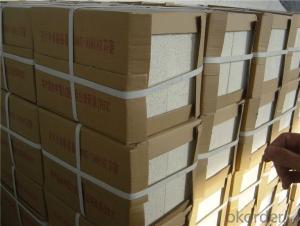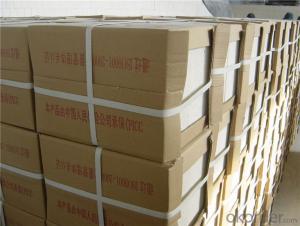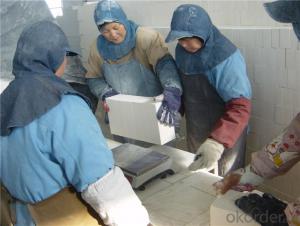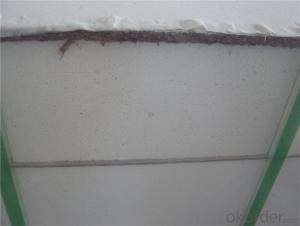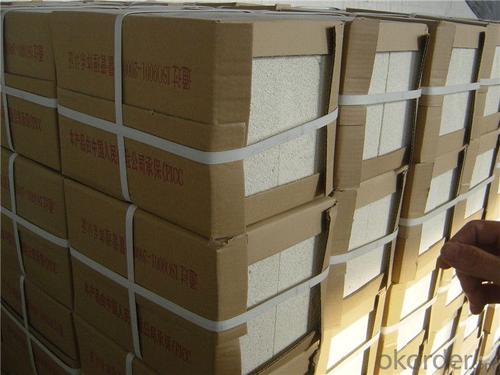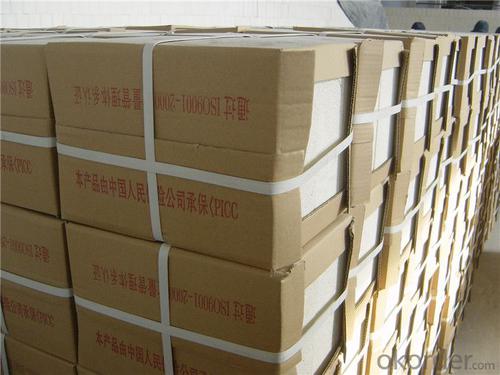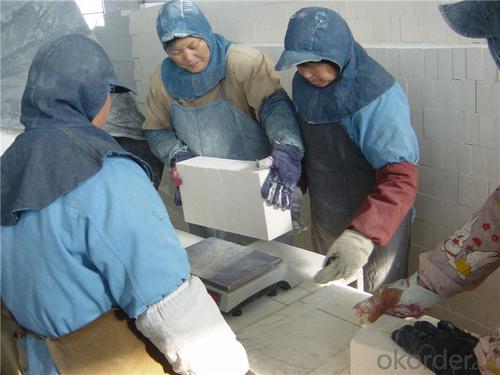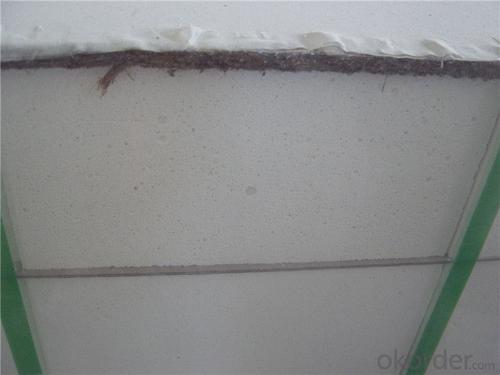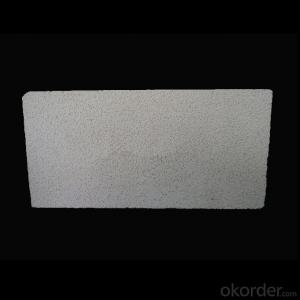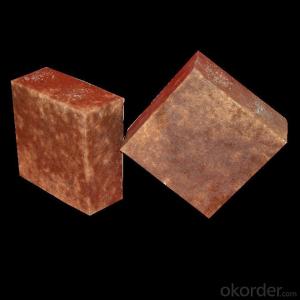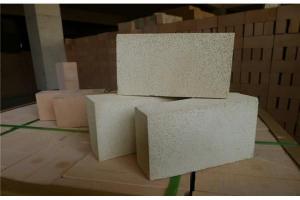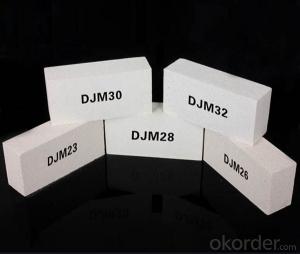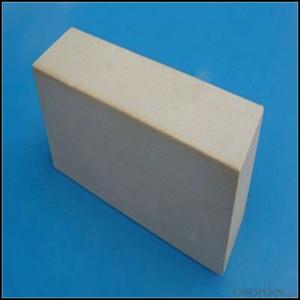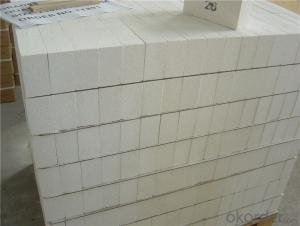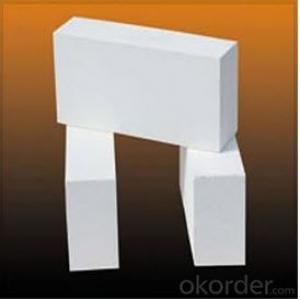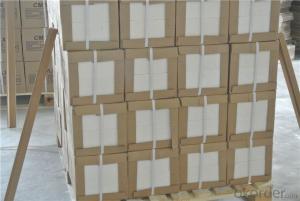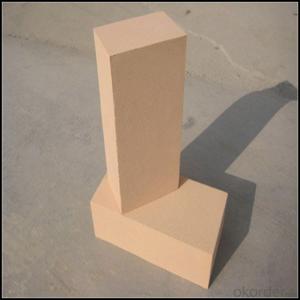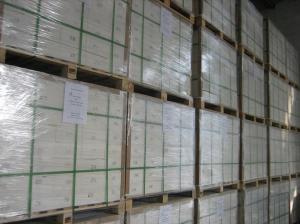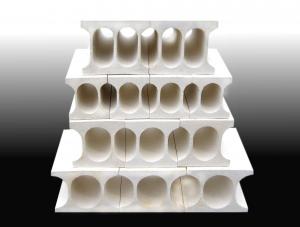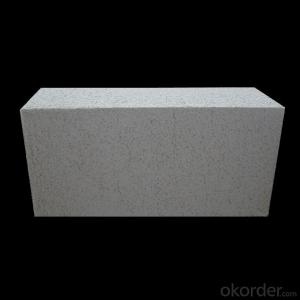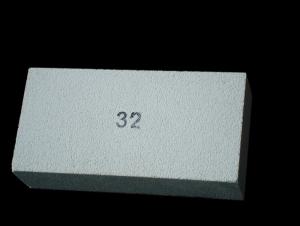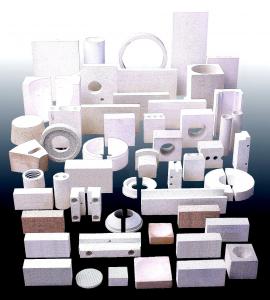Insulating Fire Bricks for Glass Tanks - Custom Shaped Fire Clay Bricks Refractory
- Loading Port:
- Shanghai
- Payment Terms:
- TT OR LC
- Min Order Qty:
- 1 m.t.
- Supply Capability:
- 1000 m.t./month
OKorder Service Pledge
OKorder Financial Service
You Might Also Like
Thermal Insulation Fire Clay Brick
Refractory brick is a block of refractory ceramic material used in lining furnaces, kilns, fireboxes, and fireplaces.
We provide high quality Refractory Fire Bricks that are used on wide range in the various industries like Cement, Glass and Steel. Refractory Fire Bricks are provided as per the quantity and specifications required by the customers. We provide an extensive range of Refractory Fire Bricks at reasonable prices that depend upon the quantity ordered.
Application
Insulating Fire Brick are used for the lining of converter, alternating current arc furnace, direct Current arc furnace and the ladle slag line, etc.
Company Advantage
(1)Long Insulating Fire Brick manufacture history: 25 years manufacturer
(2)Advanced equipment
(3)Diversification of production standards: ISO ANSI FEPA JIS ASTM
(4)Flexible payment: T/T L/C D/P D/A
(5)Professional marketing team and after-sale service
Insulating Fire Brick main feature:
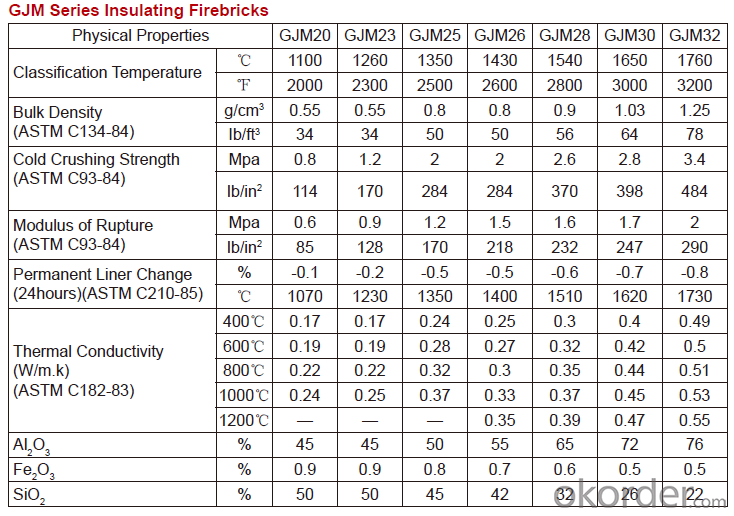
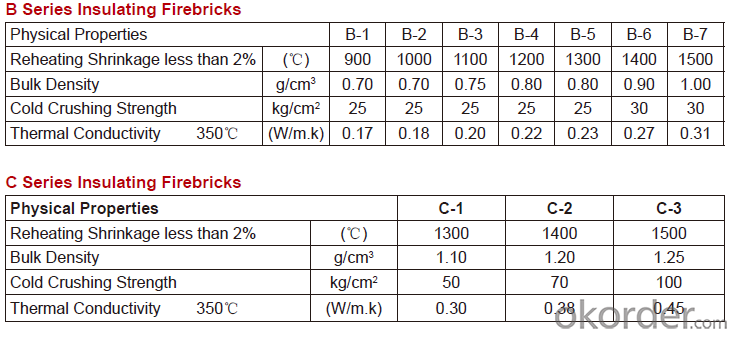
Equipment
1 unit of Ceramic Abrasive (SG Abrasive) pilot production line
2 units of Compact grain Abrasive pilot production lines
1 unit of high-end coated abrasives (abrasive cloth) production line
2 units of Boron Carbide production lines
3 large flexible crushing and sieving lines for grit production lines
6 units of 5000KVA-10000KVA dumping type electric arc furnaces for Brown Fused Alumina fusion
Q1 What’s the transport method?
A1 FCL delivery goods with wooden pallet or wooden case by sea; If LCL delivery, must with wooden case; Sometimes need open top, flat rack or bulk cargo.
Q2 What’s the required payment term?
A2 Generally 30% TT as the prepayment, 70% TT before delivery. If need, 100% Irrevocable Letter of Credit or negotiation.
Q3 Which country are our products exported to?
A3 Apart from entire Chinese market, the US, Russia, Japan, Korea, Australia and some Southeast Asian Nations.
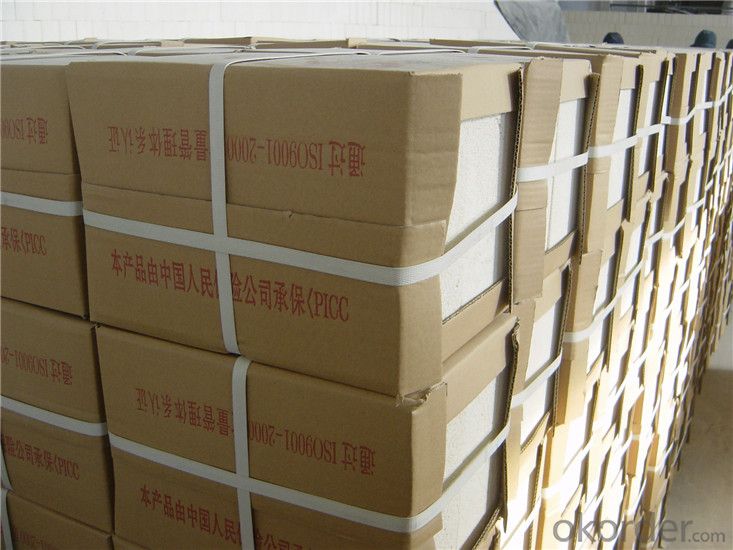
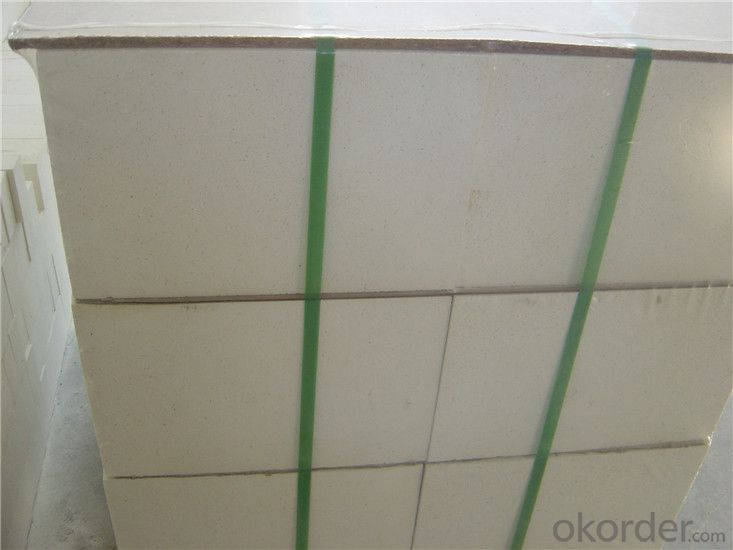
- Q: How do insulating fire bricks prevent heat transfer?
- Insulating fire bricks prevent heat transfer by their unique composition and structure. They are made of lightweight refractory materials that have low thermal conductivity. This means that they are poor conductors of heat, which helps to minimize the transfer of heat from one side of the brick to the other. Additionally, the bricks are designed with small air pockets or voids, which further reduces heat conduction by trapping air and preventing its movement. The combination of low thermal conductivity and trapped air pockets effectively hinders the transfer of heat, making insulating fire bricks an excellent choice for applications where heat insulation is required.
- Q: Are insulating fire bricks resistant to vibration or seismic activity?
- Yes, insulating fire bricks are typically resistant to vibration or seismic activity. They are designed to withstand high temperatures and provide insulation, which also makes them relatively stable and resistant to external forces such as vibrations or seismic activity.
- Q: How do insulating fire bricks affect the overall fire resistance of a structure?
- Insulating fire bricks play a crucial role in enhancing the overall fire resistance of a structure. These specialized bricks are designed to withstand high temperatures and act as an effective thermal barrier. By insulating the structure, they help to reduce heat transfer and prevent the spread of fire. Insulating fire bricks possess a low thermal conductivity, which means they do not easily conduct heat. This property enables them to absorb and store heat energy, preventing it from being transmitted to other parts of the structure. As a result, the fire is contained within a specific area, minimizing the risk of spreading to adjacent areas. Furthermore, insulating fire bricks have a high melting point, making them extremely resilient to heat. This allows them to effectively withstand prolonged exposure to intense temperatures without deforming or disintegrating. By preserving their structural integrity, these bricks ensure the stability and integrity of the overall structure during a fire event. In addition to their insulation and heat resistance properties, insulating fire bricks also act as a barrier to flames and combustion gases. Their dense composition obstructs the passage of flames and smoke, preventing them from permeating through the structure. This containment helps to limit the damage caused by fire and provides valuable time for occupants to evacuate safely. Overall, the incorporation of insulating fire bricks in the construction of a structure significantly enhances its fire resistance. They provide insulation, prevent the spread of fire, maintain structural stability, and act as a barrier against flames and smoke. By reducing heat transfer and containing the fire, insulating fire bricks play a vital role in safeguarding the structure and its occupants during a fire emergency.
- Q: Do insulating fire bricks have a high heat storage capacity?
- Yes, insulating fire bricks do have a high heat storage capacity. These bricks are designed to retain heat for extended periods of time, making them ideal for applications that require heat insulation and retention, such as furnaces, kilns, and fireplaces.
- Q: Can insulating fire bricks be used for insulation in flues?
- Insulating fire bricks are specifically designed for high-temperature applications and are commonly used in furnaces, kilns, and other industrial settings. While they are excellent for insulating heat and preventing heat loss in these environments, they are not recommended for use in flues. Flues are subjected to extreme temperatures, corrosive gases, and the potential for soot and creosote buildup. Insulating fire bricks are not designed to withstand these conditions and may deteriorate or crack over time when exposed to the acidic and corrosive gases produced by combustion. For insulation in flues, it is best to use materials that are specifically made for this purpose, such as refractory cement or ceramic fiber insulation. These materials are more resistant to the harsh conditions found in flues and are better suited to provide effective insulation while ensuring the safety and durability of the flue system.
- Q: Do insulating fire bricks require any special sealing or caulking?
- Yes, insulating fire bricks typically require special sealing or caulking in certain applications. While insulating fire bricks are designed to withstand high temperatures and provide excellent thermal insulation, they can still be susceptible to moisture infiltration and atmospheric gases in specific environments. To mitigate these risks, sealing or caulking is often necessary. Sealing or caulking insulating fire bricks involves using specialized refractory materials or compounds that are resistant to high temperatures and can create an airtight barrier. The sealing process helps to prevent the ingress of moisture, gases, or other contaminants that could compromise the insulating properties of the bricks. The specific sealing or caulking method will depend on the application and the type of insulating fire bricks being used. Some common sealing techniques include using high-temperature silicone sealants, refractory mortars, or coatings. These materials are specifically formulated to withstand the extreme temperatures experienced in high-heat environments. It is important to consult the manufacturer's guidelines or seek professional advice when determining the appropriate sealing or caulking method for insulating fire bricks. Proper sealing ensures the longevity and effectiveness of the insulation, as well as the overall performance and safety of the application.
- Q: Can insulating fire bricks be used in ladles and tundishes?
- Yes, insulating fire bricks can be used in ladles and tundishes. Insulating fire bricks are designed to provide high-temperature insulation and thermal stability, making them suitable for applications where heat retention is important. Ladles and tundishes are used in the steel and foundry industries to transport and pour molten metal, and the use of insulating fire bricks in these vessels can help to minimize heat loss and maintain the desired temperature of the metal. Additionally, insulating fire bricks can resist thermal shock and chemical corrosion, which are common challenges in these high-temperature environments. Therefore, using insulating fire bricks in ladles and tundishes can improve energy efficiency, reduce heat loss, and enhance the overall performance and longevity of these crucial equipment in the metal processing industry.
- Q: Are insulating fire bricks suitable for use in the construction of smelters?
- Yes, insulating fire bricks are suitable for use in the construction of smelters. These bricks are designed to withstand high temperatures and provide excellent insulation properties, making them ideal for lining the walls and floors of smelters. They help to retain heat, reduce energy loss, and protect the structure from extreme heat. Additionally, insulating fire bricks are lightweight and easy to install, making them a preferred choice for smelter construction.
- Q: Can insulating fire bricks be used for insulation in steel mills?
- Yes, insulating fire bricks can be used for insulation in steel mills. Insulating fire bricks are made from lightweight refractory materials that have excellent insulating properties and can withstand high temperatures. They are designed to minimize heat transfer and maintain the desired temperature inside the furnace or kiln. In steel mills, these bricks can be used to insulate the walls, floors, and roofs of the furnaces, ladles, and other equipment. This insulation helps to reduce heat losses, improve energy efficiency, and ensure consistent and controlled heating processes. Additionally, insulating fire bricks can provide thermal stability and protect the steel mill equipment from excessive heat, contributing to longer equipment lifespan and reduced maintenance costs.
- Q: Can insulating fire bricks be used in ladle covers?
- Yes, insulating fire bricks can be used in ladle covers. Insulating fire bricks are designed to withstand high temperatures and provide thermal insulation. They are commonly used in various industrial applications, including ladle covers, to retain heat and prevent heat loss.
Send your message to us
Insulating Fire Bricks for Glass Tanks - Custom Shaped Fire Clay Bricks Refractory
- Loading Port:
- Shanghai
- Payment Terms:
- TT OR LC
- Min Order Qty:
- 1 m.t.
- Supply Capability:
- 1000 m.t./month
OKorder Service Pledge
OKorder Financial Service
Similar products
Hot products
Hot Searches
Related keywords
